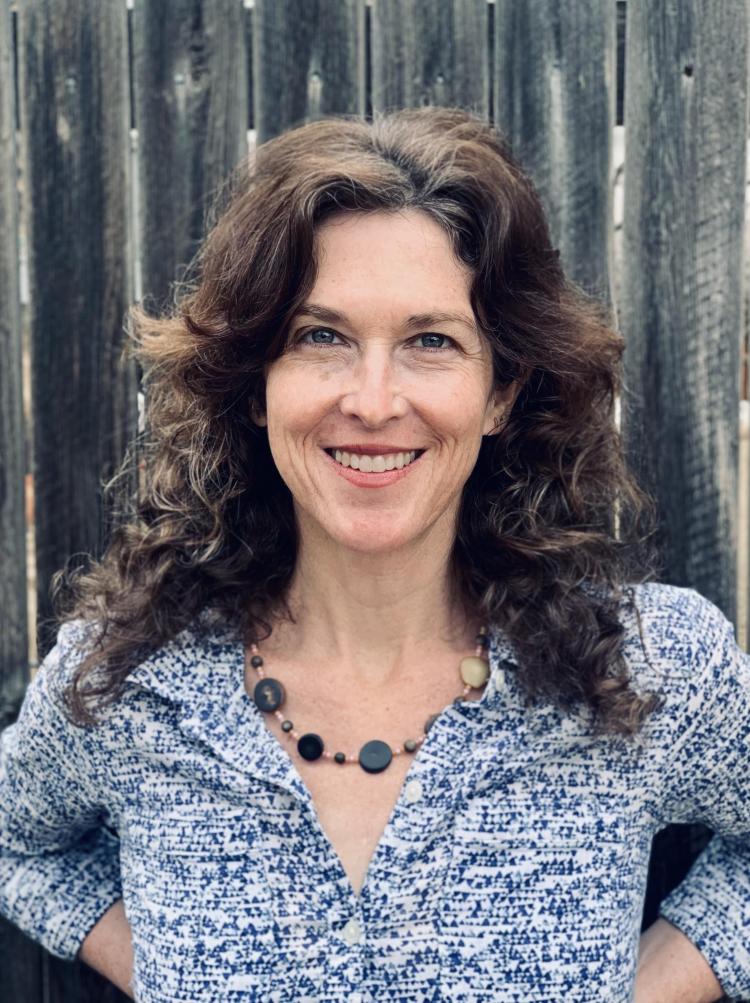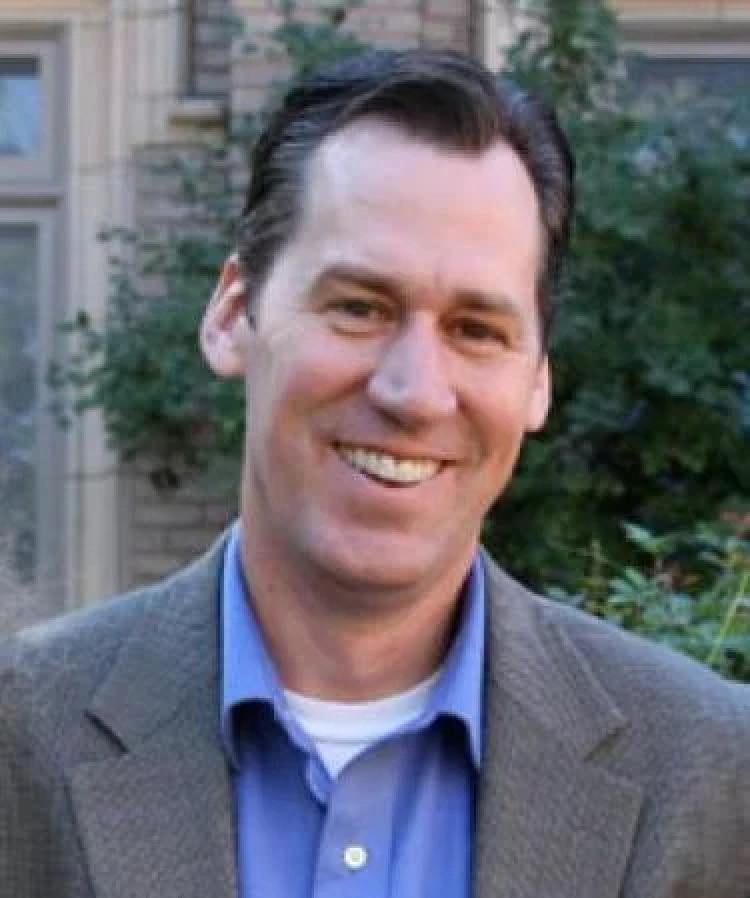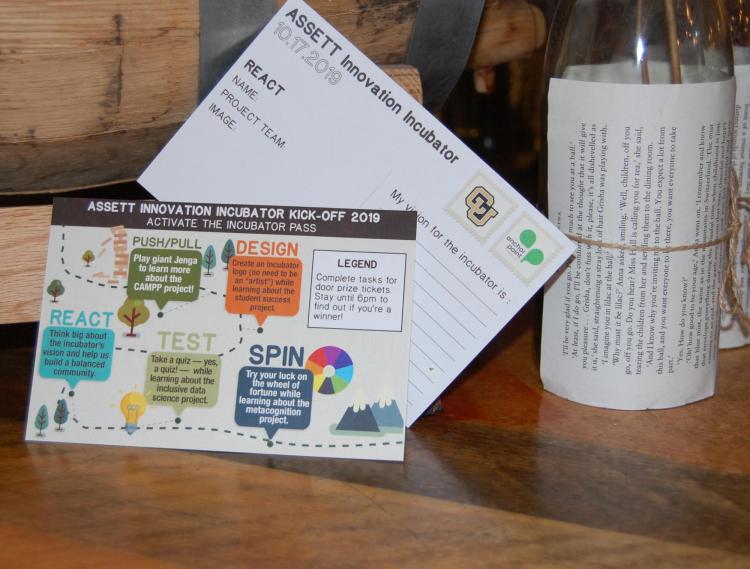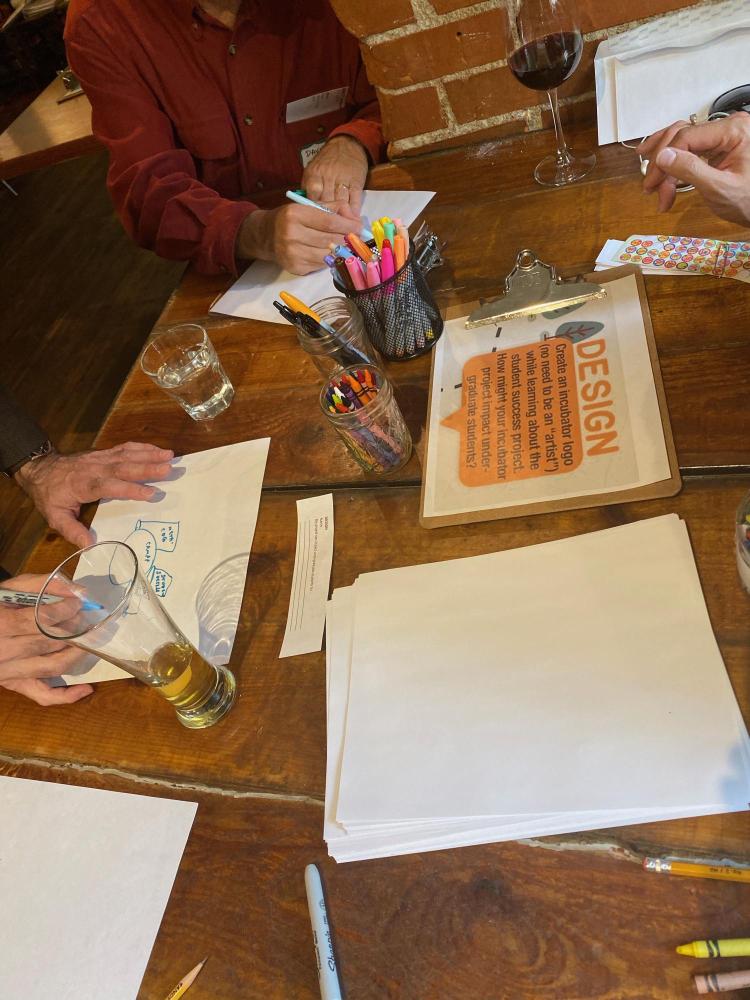Innovation Incubator helping transform teaching, learning
After a successful three-year trial run, the program is being made permanent with the goal of further innovating cross-discipline teaching in the College of Arts and Sciences
Collaborative scholarship that spans academic disciplines has proved to be a difficult goal—until now. A relatively new program at the University of Colorado Boulder, called the Innovation Incubator, is working to tear down traditional siloes between the arts and humanities, natural sciences and social sciences with the goal of transforming teaching and improving undergraduate education.
The Innovation Incubator is hosted by CU Boulder’s Arts and Sciences Support of Education Through Technology (ASSETT), which works with faculty and students to develop innovative ways to use technology in teaching and learning.
“The idea for the Innovation Incubator dates back about four years ago. The project was instigated by the question: How might we improve the undergraduate learning experience by engaging students in active learning with technology?” says Blair Young, who serves as the innovation catalyst with ASSETT.

Blair Young serves as the innovation catalyst with CU Boulder’s Arts and Sciences Support of Education Through Technology (ASSETT), which oversees the Innovation Incubator.
In a nutshell, Young describes the incubator as a “safe, resourced space to grow new ideas.”
ASSETT took an unconventional approach to garner those ideas. Instead of asking faculty for highly detailed research grant proposals, it instead asked them for simple, one- or two-page pitches outlining their overall objectives.
Once the ideas were submitted, ASSETT once again took an unconventional approach. Rather than simply approving a few of the 48 submitted proposals and rejecting the rest, ASSETT staff combed through each submission looking for commonalities among the proposals.
“As we spent time going through proposals, we started to see what we call affinity groups. We were seeing people who didn’t even know about each other, but they were submitting ideas that were really focused on some of the same things,” Young says.
From the submitted ideas, ASSETT staff concentrated on four core areas: focused and inclusive data science, multi-modal participatory publishing, metacognition and wellbeing, and the broad category of student success (see the short article, Learn more about the 2019-2022 ASSETT Innovation Incubator teams, for more details).
Ultimately, about 30 faculty members participated in the three-year trial run of the Innovation Incubator initiative, which kicked off in 2019 and wrapped up in the fall of 2022, according to Young.
Breaking down barriers
CU Boulder English Professor David Glimp was one of several faculty members from across disciplines who joined the Inclusive Data Science team, which worked together to develop a new introduction to data science course incorporating humanistic perspectives.
“Most of the people in this collaboration I had not met before,” he says. “The Interdisciplinary Data Science team gave me the opportunity to meet colleagues from applied math, ecology and evolutionary biology, geological sciences, and writing and rhetoric, who all had shared interests, so it was a remarkable experience—really an unprecedented opportunity to work with colleagues across divisions where we don’t normally work together.”
Partly because the group was diverse—but mostly because the endeavor was brand new—it did take a bit of time for team members to formalize a plan, according to Glimp.

CU English Professor David Glimp volunteered to participate in the trial run of the Innovation Incubator. He taught the inclusive data science courses in collaboration with faculty from other academic disciplines.
“We probably spent six months or so just brainstorming, trying to identify shared interests and campus needs and how to capitalize on the growing interest in data sciences while recognizing the ongoing importance of the humanities,” he says. “So, there were a lot of meetings in the beginning where progress was not apparent, but with the assistance of ASSETT, things came together in terms of what our project could be.”
Glimp, who has been teaching English at CU Boulder for 17 years, describes his experience of working with the Inclusive Data Science team as “transformative.”
“It’s provided me with a new set of collaborators, and it’s helped me develop my own research and my teaching skills,” he says.
In addition to providing $200,000 in funding that was split among the four initiatives, ASSETT provided human resource support and guidance for the teams.
“Each team was co-facilitated by me, and one other ASSETT staff member who had expertise in the particular focus of each team,” says Young. “We worked with them early on regarding the idea conception and what success would look like over the three-year arc of the initiatives.”
In addition to physical resources, Young says one of the most valuable assets for the four teams was the time afforded by multi-year funding to refine their ideas and make adjustments as they rolled out their initiatives.
“It’s really hard to launch an innovative idea and implement that idea in one year. So, I think our teams really benefitted from a three-year cycle, especially in higher ed, when you are asking folks who are often teaching and researching largely on their own to break out of their typical way of work,” she says.
Bringing inclusivity to data science
Young gives high marks to the inclusive data science endeavor.
“They (team members) set out with really big aspirations—to really transform the culture of data science on our campus, which they saw as very siloed,” she says. “They wanted to create an inclusive environment for data science and to really bring a lot of disparate data science initiatives on campus together.”

The ASSETT Innovation Incubator is designed to promote interdisciplinary teaching in the College of Arts & Sciences and making use of technology with the goal of transforming teaching and improving undergraduate education.
Specifically, Young says there was a desire to offer a program making use of data science for students who are historically underserved in the areas of science and technology, such as first-generation college students, students of color, women, and students focused on the humanities.
“The course Interdisciplinary Data Science for All has succeeded on several fronts," according to Young, who notes the program attracted 67 students its first year and more than twice that number its second year. Interdisciplinary Data Science for All also has received funding from the National Science Foundation for its continued development. The team also joined forces with other faculty on campus to develop new interdisciplinary coursework that combines the humanities and data science; this latter initiative received funding from the National Endowment for the Humanities.
Glimp says the increased student interest in interdisciplinary data science courses and the additional funding are positive developments, while adding that it’s important to evaluate success on several criteria.
“I think the incubator should have many metrics of success—and the primary metric should be its impact upon students and new student opportunities for learning,” he says. “Another metric should be the project’s success in encouraging faculty interest in pedagogy and pedagogical innovation, which it did in my case.”
Meanwhile, the other Innovation Incubator initiatives funded by ASSETT also achieved success by their own metrics and will continue, thanks in part to bridge funding ASSETT is able to provide, according to Young.
Innovation incubator’s mission is continuing
What’s more, after performing a detailed evaluation of the Innovation Incubator, Young says the decision was made to adopt it as a permanent ASSETT program. Plans call for a fresh cycle of incubator awards every three years, providing opportunities for new interdisciplinary teams of faculty, staff and students to grow innovative ideas for teaching with technology to improve the undergraduate experience in the College of Arts and Sciences.

The Innovation Incubator kicked off in 2019 with faculty brainstorming ideas for cross-disciplinary education. ASSETT took those ideas to come up with four core areas: focused and inclusive data science, multi-modal participatory publishing, metacognition and wellbeing, and the broad category of student success.
ASSETT is seeking ideas for the Innovation Incubator 2023-2026 idea submission process. A total of $200,000 is available to award up to four interdisciplinary teams over the three-year funding period. ASSETT is encouraging interested parties to submit their ideas by this Thursday (March 9) so that others can add comments to the idea or make a bid to join their team.
Final idea submissions, which are expected to run about 1,000 words, should be submitted by Tuesday, April 11.
There is a notable change in the coming innovation incubator cycle.
“For the next cycle, we’ve actually put out the call to faculty and students. So, students can be the lead submitters on ideas for the new cycle of the incubator,” Young says. “We are really emphasizing students as partners in the framework for the next cycle.”
Additionally, while the lead people for any incubator projects must be representatives of the College of Arts and Sciences, Young says those A&S college representatives can elect to bring in someone from a different CU college—the College of Engineering, for example—if they believe it would help their project.
Young says ASSETT will judge projects using four criteria: 1) Is the idea student centered? 2) Does it break down disciplinary barriers within the college? 3) Is it actionable? 4) And is it scale-able?
Young says she is not aware of any other university supporting an incubator or lab with the same focus as the one at ASSETT, which she says reflects the innovative nature of CU’s program.
Glimp says the College of Arts and Sciences deserves credit for supporting the efforts of the Innovation Incubator.
“It’s to the college’s credit that they’re funding this kind of investment and making it possible for colleagues to engage in such collaborations,” he says. “It’s a unique approach to funding faculty efforts and I think it’s visionary.”
• The CAMPP team investigated opportunities to establish a peer-to-peer support environment for faculty and students by creating a multimodal publishing collective (aka, CAMPP) that produces projects that meet academic standards and are open and accessible to the community at large. Click here to listen their recorded accounts of this work.
• The Metacognition & Wellbeing team developed resources and learning objects that encourage students’ awareness and understanding of their thought processes and learning strategies, as well as their mental, emotional, and physical well-being —(including mindfulness and contemplative practices). Click here to listen to their podcast recording on student metacognition.
• The Student Success team worked broadly to create an understanding about gamification pedagogy among faculty. Their specific focus is on a role-playing pedagogy called Reacting to the Past (RTTP). Click here to listen to a podcast about how RTTP invigorates the classroom at CU Boulder.
• The Inclusive Data Science team integrated data science methods and tools across the curriculum via a new team-taught introduction to data science, “Inclusive Interdisciplinary Data Science for All,” that weaves together the teaching of statistical reasoning, basic coding, and humanistic forms of inquiry. Click here to explore a student facing website about the course.

